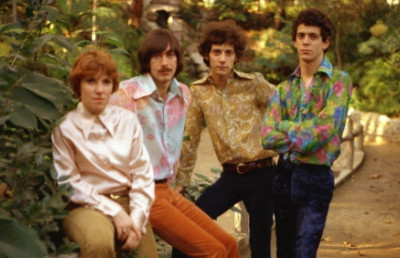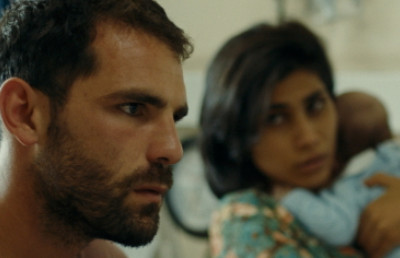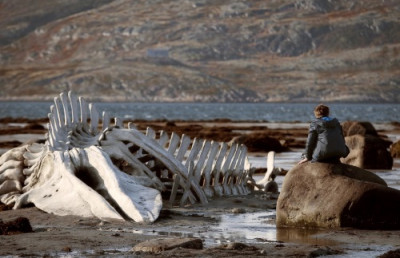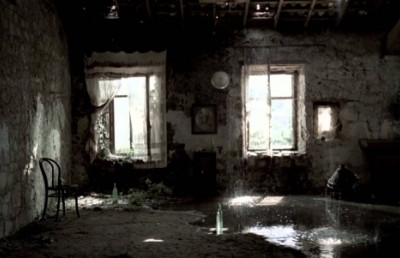Circles, Myth, and Darwinism: Stanley Kubrick’s 2001: A Space Odyssey and Peter Greenaway’s A Zed and Two Noughts (ZOO)
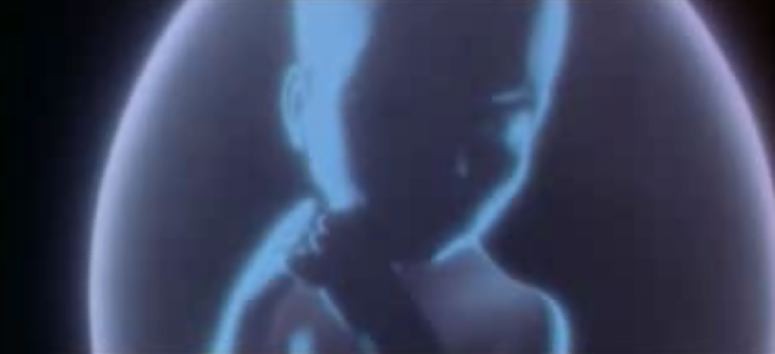
It seems counterintuitive to discuss Stanley Kubrick’s sci-fi classic 2001: A Space Odyssey (1968) alongside Peter Greenaway’s provocative postmodern art house venture A Zed & Two Noughts, aka ZOO (1985). A closer look, however, reveals a series of affinities so strong that the lack of any previous comparative analysis seems surprising. Both directors consider their films as works of art to be situated on the same level as other art forms, such as music or painting, and, in both instances, this conception has led to a noticeable reduction of the status of narrative. The common use of an almost mathematical precision, a geometric composition of scenes effectively constituting a “geometric space” with a particular reliance on symmetry, strikes the eye. Also, in both cases this stringent meditation on form is interwoven with an ontological query, a reflection on man’s destiny.
Kubrick and Greenaway pose their respective philosophical queries in relation to notions of biological evolution. Yet while both examine the human condition by refracting it through a Darwinian prism, 2001 typically elicits from its audience a sense of awe, whereas ZOO conveys Greenaway’s nihilism. This distinction in the understanding of evolution has an “epochal” dimension which can be clarified by considering, in the first instance, the broad cultural and philosophical context of both films – the predominance of materialist approaches to ontology that have sprung up in the wake of the scientific revolution of the 17th century. Kubrick and Greenaway position themselves differently within this overarching context. Whereas Kubrick draws on mythology, and therefore a decidedly pre-modern, pre-scientific approach to constructing meaning, to convey the impression of a universe in which evolutionary process carries metaphysical significance, Greenaway moves in the opposite direction towards a postmodern stance that, while also drawing on mythology, is marked by a perceived relativity, or even void, of meaning that finally comes to engulf science itself. The deployment of the circle by Kubrick and Greenaway, both in terms of a prominent visual theme with potent symbolic undercurrents and in terms of a circular narrative, with the end of the narrative symmetrically reflecting the beginning, is a case in point. A closer look at the symbolism in 2001 and ZOO reveals the radically different directions the films take in approaching issues of meaning and purpose.
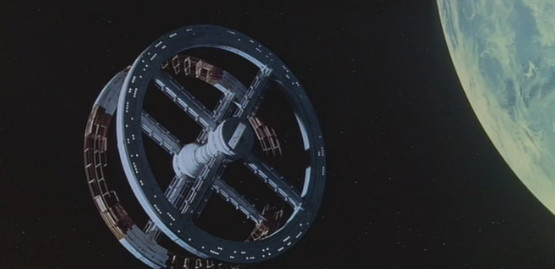
In other words, the objective of this comparative analysis is to establish how these two films sharing both a formalist aesthetics and an evolutionary focus arrive at their wildly diverging “philosophical frames.”
Our experience of 2001 typically elicits a sense of profound “significance.” To get to the core of the film’s carefully crafted underlying meaning touching on the metaphysical requires that we take a (very brief) excursion into the scientific revolution of the 17th century that, in a foundational methodological reduction, was launched, precisely, on the premise of foreclosing any concern with facets of subjectivity, meaning, purpose, or consciousness, as elements intrinsic to physical reality. A line can be traced from this revolution, initiated by René Descartes, Galileo Galilei, and Isaac Newton, to 2001 and to Kubrick’s reflections on science and his film in his interview with Eric Norden for Playboy in 1968, which has since emerged as one of the key references for Kubrick scholars.
In Principia Philosophiae (1644), a pillar of the scientific revolution, Descartes reiterated his substance dualism, the alleged substantial distinction of mind and matter (res cogitans and res extensa) first outlined in the Meditationes (Meditations on First Philosophy, 1641). In the Principia, he set out in detail the principles governing matter, or res extensa, pinpointing, as matter’s principal quality, extension, or the property of being extended in space. In addition, he deemed matter to be “inert,” remaining in a state of rest when not being acted upon. It required “impact” for one body to act upon another, and, crucially, the only form of causality was “efficient causality,” meaning causes were, exclusively, events prior in time (Beiser 83-84). Descartes’ mechanistic conception of matter, effectively ruling out any teleology (explaining elements of the material world in terms of their function instead of how they came to be), was aimed at rendering it quantifiable in mathematical terms (Beiser 83-84). Cartesian mechanism, alongside Newton’s weaker form, which allowed effect at a distance, represented a revolutionary paradigm shift relative to Aristotelian based scholastic philosophy. In conjunction with a new emphasis on experiment and theory-building, mechanism unleashed a potential for the advance of knowledge that would eventually culminate in the capitalist Industrial revolution of the late 18th and early 19th century. 1 At its core, the foundation of modern science was thus concomitant with an emancipation from theology. Yet this seismic shift in the history of ideas entailed a constitutive “sacrifice” of meaning that has been summarized by the philosopher Thomas Nagel: “The scientific revolution of the 17th century, which has given rise to such extraordinary progress in the understanding of nature, depended on a crucial limiting step at the start: It depended on subtracting from the physical world as an object of study everything mental – consciousness, meaning, intention or purpose” (Nagel 2013).
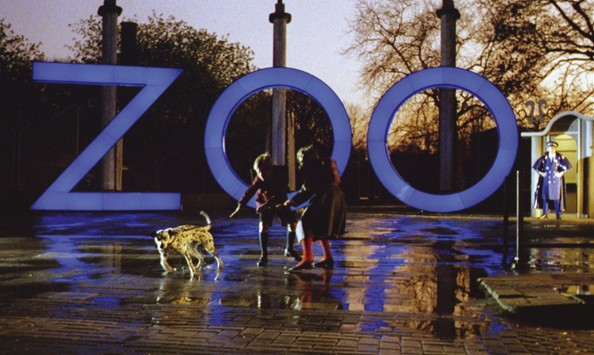
The anti-teleological premise that has informed modern science has gradually been transformed into an all-encompassing ontological presupposition, a development ensured both by the breathtaking series of science’s accomplishments and the further secularizing effects of the Enlightenment. Accordingly, by the time of the production of 2001, the extraction of meaning from physical reality underlay the bulk of major Western intellectual approaches, from the Anglo-American analytical tradition to structuralism and post-structuralism, psychoanalysis, the existentialism of Camus and Sartre and, arguably, Marxism.
Perhaps the Sartrean existentialist best summarizes the semantics of a scientifically informed ontology when he claims that “existence precedes essence.” The outer being is just there, an infinite grey mass serving no purpose, definitively unmoored from the transcendent rationality guiding previous epochs.
Large tracts of Norden’s very long 1968 interview with Kubrick not only mirror this predominant materialist ontology, but also the scientific rationality on which it is, historically, based. As Kubrick reflects on a number of scientific issues, such as the aging process, or the possibility of life within and outside of the solar system, in an informed and detached manner and at an admirable level of bio-chemical detail (Norden), his stance seems akin to that of an existentialist contemplating his mortality in a cosmos deprived of meaning. He refers to “the mind-paralyzing realization that only a few years of existence separate birth from death” and notes that “if man really sat back and thought about his impending termination, and his terrifying insignificance and aloneness in the cosmos, he would surely go mad, or succumb to a numbing sense of futility” (Norden). In view of the unimaginable dimensions of space, he likens man to a “momentary microbe on a dust mote” and indeed explicitly references the ”meaninglessness of life.” 2 Despite this profound pessimism, he finishes on a positive note, remarking that “however vast the darkness, we must supply our own light” (Norden).
Kubrick’s clearly authentic, viscerally apprehended futility, coupled with the “superego” imperative to construct his own meaning, reflects key parameters of Sartre’s existentialism, as Sartre came to regard an insight into “true” autonomy – crucially involving the freedom from any (falsely) hypostasized pre-existing essence – as a precondition for leading an authentic, meaningful life. Kubrick as a film director “supplies his own light,” much like Roquentin, the hero of Sartre’s La nausée (Nausea) (1938), who towards the end of the novel realizes that the answer to the nauseating contingency of existence lies in opposing to it something that possesses an inner necessity, which is the novel he eventually resolves to write.
This apparently existentialist backdrop notwithstanding, the film’s startling metaphysical vision reveals Kubrick’s indebtedness to the traditions of mythology and Western metaphysics that predate and contradict modern secular approaches to philosophy. In the same 1968 interview, Kubrick refers to “the God concept” (Norden) as the heart of the film. He is noticeably at pains to distance himself from any established religion, focusing instead on what he creatively labels a “scientific definition of God” (Norden). This allows him to support a metaphysics while appearing to remain rooted within the coordinates of a “secular” scientific rationality. In this excerpt, Kubrick bases his “scientific” definition of the divine on notions of cosmic and biological evolution prevalent in the popular scientific discourses of the time:
It’s reasonable to assume that there must be, in fact, countless billions of such planets where biological life has arisen, and the odds of some proportion of such life developing intelligence are high. Now, the sun is by no means an old star, and its planets are mere children in cosmic age, so it seems likely that there are billions of planets in the universe not only where intelligent life is on a lower scale than man but other billions where it is approximately equal and others still where it is hundreds of thousands of millions of years in advance of us. When you think of the giant technological strides that man has made in a few millennia—less than a microsecond in the chronology of the universe—can you imagine the evolutionary development that much older life forms have taken? They may have progressed from biological species, which are fragile shells for the mind at best, into immortal machine entities – and then, over innumerable eons, they could emerge from the chrysalis of matter transformed into beings of pure energy and spirit. Their potentialities would be limitless and their intelligence ungraspable by humans. (Norden)
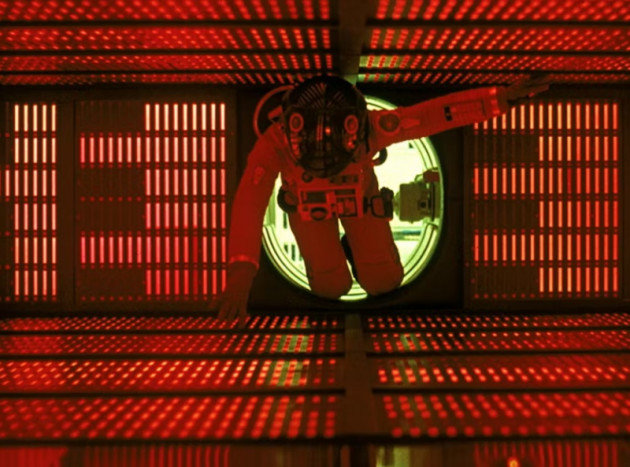
Kubrick projects the possible development, somewhere in the cosmos, of pure spirit contextualizing this possibility with the centrality to 2001 of the “God concept.” This metaphysics of evolution closely parallels developments in the film, where Bowman, having undergone death and rebirth, is returned to the proximity of Earth as a star child, freed from the fetters of matter. However, in view of the principles of modern science, especially its initial “limiting step,” a “scientific definition” of God is explicitly ruled out. Kubrick’s argument, resembling the concept of an inherent tendency of the universe to evolve spirit as elaborated in the grand metaphysical systems of German post-Kantian idealism, more properly fits the mold of science-based philosophico-theological speculation.
A renewed consideration of the archaic, mythological dimensions of 2001 is perhaps most suited to uncovering what’s really at stake here, as this will provide the appropriate context to Kubrick’s “ontology” of evolution as expressed in his film. Recall that Kubrick and Arthur C. Clarke, author of the novel and co-author of the film script, aligned the plot of 2001 with Joseph Campbell’s “monomyth,” a narrative matrix hypothesized to underlie the shifting body of mythology across time and space, as delineated in Campbell’s book The Hero with a Thousand Faces (1949). The link between 2001’s partially “submerged” narrative and Campbell’s Hero has long been established in Kubrick scholarship, as it is known that Kubrick gave the book to Clarke prior to the film’s production (Rice 1-21).
It is a commonplace that mythology functions to furnish a metaphysics, a “vision” of reality that serves to situate the members of a tribe or wider social group in a meaningful, usually hierarchical, cosmos, providing them, via a host of narrative examples, with the coordinates for the orientation of action and morality. However, in The Hero with a Thousand Faces, Campbell, a scholar of comparative mythology with a strong Jungian bias, goes a step further. Rather than merely analyzing myths as discourses anchoring the established social order and constituting the horizon of a shared cultural reality, he espouses a view of mythology that is in itself mystical. He follows Jung in situating dreams and mythology on the same level, considering mythic thought to be deeply ingrained in the fabric of the collective psyche, a “secret opening through which the inexhaustible energies of the universe pour into cultural manifestation” (Campbell 1). Myth even actively functions to “carry the human spirit forward” (Campbell 10). Note how this language resonates with Kubrick’s notion of “beings of pure energy and spirit” having arisen in the course of cosmic evolution.
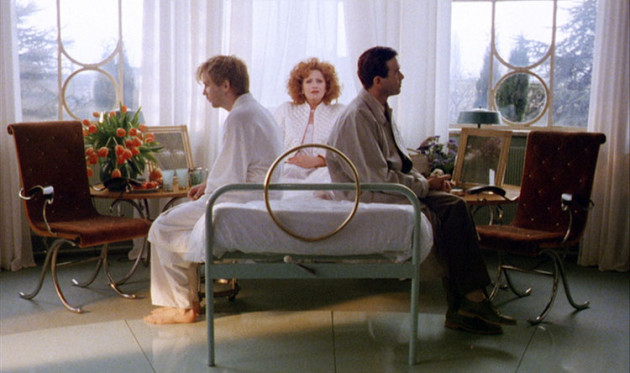
In light of the influence of Campbell on Kubrick and Clarke, the authors of 2001 can be seen, not so much to provide an impossible scientific definition of God, but to interweave scientific notions of evolutionary process with a deliberate neo-mythological construct, effectively re-orienting a universe that has become fractured and disenchanted as a result of science, from which “everything mental, consciousness, meaning, intention or purpose” (Nagel) has been subtracted, towards a renewed sense of metaphysical wholeness.
The monomyth, the supposed narrative matrix underlying the spectrum of known historical manifestations of myth, with deep roots in the (collective) unconscious, was adopted by Kubrick and Clarke as a broad template for 2001, yet what, exactly, are its outlines? This underlying matrix has, Campbell suggests, a tripartite, circular structure that mirrors the three stages commonly found in rites of initiation practiced by primitive tribes: separation, initiation, and return. As Campbell writes: “A hero ventures forth from the world of common day into a region of supernatural wonder: fabulous forces are there encountered and a decisive victory is won: the hero comes back from this mysterious adventure with the power to bestow boons on his fellow men” (28). 3 To Campbell, organicism, spiritual “surplus value,” and circular narrative structures are co-extensive in the archaic semantics of myth, forming a nexus which serves to unify the individual with the organism of the tribe/society, and the tribe or city with the organism of the cosmos (Campbell 355). Accordingly, he places his original formula of the monomyth next to an illustration, a circle (Campbell 28). He then considers a wide range of empirical examples to support the notion of the fundamental circularity of all mythology. One example is the journey of the Buddha, whose departure from his palace with the aim of gaining enlightenment (stage one) conditions all of his subsequent supernatural encounters (stage two), which in turn facilitate his teaching on the origin of, and liberation from, suffering upon his return and re-integration into society, which he henceforth serves with the knowledge he has acquired in mystical experience (stage three).
In his 1969 interview with Joseph Gelmis, Kubrick delineates in broad brushstrokes the plot of 2001, which will remain mysterious to anyone who has failed to gather further information, such as can be gleaned from Clarke’s novel of the same name (written at the same time as the screenplay, but published after the film’s release). In light of Campbell’s metaphysics of myth and Kubrick’s own elaborations, 2001’s distinctive “fingerprint,” a deliberately neo-mythological construct conveying an evolutionary metaphysics, shifts into sight. Kubrick begins by glossing the polished black monolith in the opening chapter “The Dawn of Man” as an artifact left behind by extraterrestrial visitors four million years previously in the African savannah in order to guide the evolutionary progress of a group of proto-human primates they had been studying. The second monolith buried on the surface of the moon emerges as a kind of “cosmic burglar alarm” in Kubrick’s discourse, designed to signal “man’s first baby steps into the universe” (Gelmis). The third had been placed in orbit around Jupiter by the extraterrestrial visitors, to await the time when “man has reached the outer rim of his own solar system” (Gelmis). Bowman, the surviving astronaut of the Jupiter mission, enters a force field, or star gate – opening up via this monolith – which precipitates him into “a journey through inner and outer space” (Gelmis), conveying him to another region of the galaxy. In the subsequent, unfathomably disturbing sequence, Bowman undergoes an accelerated aging, as he passes from middle to old age, then dies. This, Kubrick notes, takes place in a timeless state in a “human zoo approximating a hospital terrestrial environment drawn out of his own dreams and imagination” (Gelmis) and forms the basis for Bowman’s “rebirth” as a star child, who returns to Earth in “the next leap forward of man’s evolutionary destiny” (Gelmis).
Kubrick deliberately renders this narrative implicit in the film, submerging it beneath the manifest (audio-visual) content, to maintain the film’s integrity as an abstract, philosophical work of art. The dynamics of the “hero’s journey” in 2001 are in this way enmeshed with the film’s meticulously crafted, geometry-based, and at times psychedelic, aesthetics in such a way as to strike a chord in the viewers (collective) unconscious. This approach makes the boundaries between inner and outer, or the subjective and the objective, appear more fluid and dynamic, thus contributing to a sense of a living, organic universe in which humanity has its proper place, and in which it can “find” itself.
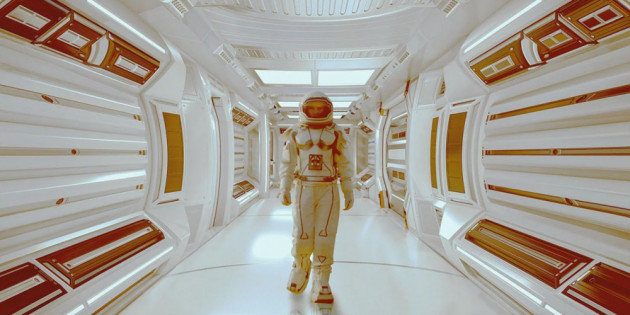
The journey begins as Bowman, initially ensconced in his hibernation pod, departs for the “Jupiter mission” on the starship Discovery. On arrival at the ship’s destination in the vicinity of Jupiter, the third monolith precipitates him to another region of the galaxy in a “journey through inner and outer space” that also reflects the then contemporary Zeitgeist shaped by 1960s counter culture and its emphasis on boundary-dissolving states of consciousness. In terms of Campbell’s Jungian reading, he leaves the world of everyday to enter into a magical, supernatural realm rife with fabulous forces. This mythic journey comes full circle as Bowman returns to earth as a “star child,” in the accomplishment of “spirit” as the last step in man’s evolutionary trajectory. Campbell explicitly conceives of this step of the monomyth, closing the circle, as consummating a “circulation of spiritual energy” (34). The long retreat of the hero becomes justified to the extent that he finds a way to integrate his extraordinary mystical experience in a socially beneficial way, which he can achieve primarily by revitalizing with fresh spiritual energy a social order that has become sterile. This process is only hinted at in 2001, as, at the very end of the movie, the star child clearly bearing the facial features of Bowman for a moment faces us directly. Kubrick effectively draws us into the frame of the modern myth he has created, directly “interpellating” us, the audience – a collective that might have developed a jaded outlook on life, given the corrosive effects of an all-encompassing scientific rationality. The conjunction of death with re-birth/resurrection is, of course, also a fundamental myth motif central to Christian mythology.
The film’s ending closes more than one circle. The “human zoo” sequence that sees Bowman encounter older versions of himself, uncanny doubles that as such intimate the presence of death, is clearly designed to encode the existential conundrum of the life cycle. Its twofold function of allegorizing the dark and universal drama of the human condition and, on the level of the narrative line, preparing the next evolutionary leap of mankind, corresponds, atmospherically, to a suffocating sense of “incestuous” claustrophobia and surreal excess. In a stroke of genius, Kubrick releases the tension of this “contractive” scene as he lets both Bowman’s personal journey as a mythic hero and the existential allegory come full circle in the open expanse of the concluding imagery of the vast star child in its transparent womb-like enclosure next to Earth. Yet 2001’s monomythic tale transcends Bowman’s role as an individual, its “hero” is to be conceptualized more broadly to include humanity traversing its evolutionary journey. Thus the initial catalyzing of evolution four million years previously in the African savannah sets up the “Spring” of the film’s primary circle. This circle also closes at the end, as indicated by Kubrick’s compelling use of the crescendo of Richard Strauss’ “Thus Spoke Zarathustra,” which is used twice. The first time is in the film’s opening chapter, when a proto-human ape interacting with the monolith discovers, with a strange mixture of aggression and touching child-like curiosity, that bones can be used as weapons, thus advancing evolution by giving his tribe a key advantage over its competitors. The second time is at the end of the film as an emphatic full stop, when Bowman, as star child, has returned to Earth. The film therefore “begins” and ends with a daunting reference to the notion of the “Overman” (Übermensch) from Friedrich Nietzsche’s novel Thus Spoke Zarathustra (1883), indicating that the teleology of evolution in this film, an arc extending from an archaic prehistory to an inconceivable new life of “pure energy and spirit,” has been accomplished.
We can conceive of the film’s ending as closing a system of concentric circles.
The contemporary, space-age myth Kubrick and Clarke weave into the narrative matrix of the monomyth preserves not only the circularity Campbell deemed central to all mythology, but also its metaphysical essence, which has now become synonymous with spiritualizing evolution. The discernible “geometry” of 2001’s myth has a visual correlate on the level of the film’s hypnotic aesthetics, which furnish a constant supply of circles, including HAL’s camera eye/I, the focus on Bowman’s eye during the stargate sequence, or the vast array of circular structures related to the film’s space crafts. Beyond the proliferation of the circle, we note a wider construction of a “geometric space” in the film, which relies heavily on symmetry, graphically evident in the human zoo sequence with its mushrooming sublime and uncanny mirror symmetry. Kubrick masterfully entangles the layers of 2001’s narrative and visual form, in a kind of “dance” that calls to mind his explicitly stated ambition to create a cinematic work of art comparable to other art forms, such as musical symphonies (Norden).
With a view to Campbell’s Jungian alignment of dreams and myth as having a common source in the collective unconscious, we appreciate the purpose of the film’s burgeoning geometric shapes, which is to foreground a dream logic in expressing mythic content. The circle, an ancient mythic symbol of wholeness, perfection, and infinity, forms a crucial component of most mandalas. As such, it has been associated by Jung with the organizing dominant amongst archetypes, the numinous archetype of wholeness (Self) incarnating the image of God in man (Jung 1961, 334-335). Its deployment in 2001 as a prominent visual theme forms part of a deliberate strategy on the part of Kubrick to convey his neo-mythological narrative largely non-verbally, in a dream-like manner, relying on visual metaphors and connections apt to resonate with the viewers’ unconscious. Consider how, at critical turning points, the film’s ubiquitous symmetry collapses into the single straight line of the planetary alignment, the “syzygy,” which literally points to infinity and transcendence. The multiple instances of the syzygy, on the plains of Africa, on the Moon, and finally in the vicinity of Jupiter, coincide with the moment the respective monolith consummates the function for which it had been placed on site, ushering in a new eon by catalyzing human evolution. In each instance, the geometric ordering is set to the strains of the “razor” of Ligeti’s microtonal music heightening our sense of an ineffable mystery.
These abrupt conjunctions, of key turning points in human evolution with the straight line of the syzygy, cannot fail to convey a cosmic rationality in which we, as a conscious species, participate. Kubrick’s use of the alignment paradigmatically exemplifies the Jungian concept of synchronicity, defined as a meaningful coincidence, for we are led to intuit, at these instances, a sense of meaning and purpose at the core of both the cosmos and a human being’s individuated consciousness. It is significant that Jung thought of synchronistic events as acquiring their perceived significance as a result of the activation of the collective unconscious, which he thought mediated between inner-psychological and outer-physical being.
Kubrick and Clarke had been exposed to Jung via Campbell, and Kubrick’s thoughts on the monolith in his interview with Gelmis also explicitly point to Jung, as he refers to the enigmatic black box as “in itself something of a Jungian archetype and also a pretty fair example of ‘minimal art’” (Gelmis). Kubrick and Clarke in this way effectively conjoin the cosmos of Jungian ideas with (evolutionary) science on the aesthetic level of filmic art.
Intriguingly, however, a rigorous, formal integration of Jungian theory with science had previously been accomplished by Jung himself, who sought to furnish his concept of synchronicity as an “acausal connecting principle” with a sound ontological and scientific basis. To achieve this end, he collaborated with quantum physicist and Nobel laureate Wolfgang Pauli over a period of three decades, finally devising a fully-fledged ontology of archetypal theory based in quantum physics, which he then published in his work on synchronicity in 1960. Previously, Jung had conceived of his theory as merely an empirical phenomenology of the psyche. In his publication on synchronicity, however, he took an additional step into ontological territory, expanding on his notion of the archetype as a psychological ordering factor to encompass its ordering function in the physical Real (Gullatz and Gildersleeve). If synchronistic events were defined at their core by the same (or similar) meaning that pertained to both the physical event and the corresponding psychological state, how could this conjunction be explained ontologically? To explain synchronicity, Pauli and Jung eventually theorized that the world had to be conceived in monistic, anti-Cartesian terms as an underlying unity of essence, an unus mundus, that “decomposed” into mind and matter, both subject to the ordering principle of the archetype, in a close analogy with the principle of complementarity in quantum physics (Gullatz and Gildersleeve).
In this light, 2001’s monolith, specifically designated as an archetype by Jung, emerges as a “master signifier” tasked with exercising order through the film’s odyssey, aligning the dual aspects of its passage through inner and outer space. The attendant sense of a meaningful cosmos of which we form an integral, non-alienated part is closely linked to the film’s mythic mode of enunciation.
Slavoj Zizek sees in Jung’s conflation of archetypal theory with quantum science an effective return to a pre-scientific, pre-modern universe, writing that “Jung advocates a return to the pre-modern universe of Wisdom and its sexo-cosmology, the universe of a harmonious correspondence between the human microcosm and the macrocosm, that is to say, for him the subject of psychoanalysis is the pre-modern subject living in a universe in which “everything has a meaning” (Ẑiẑek 1996, 209).
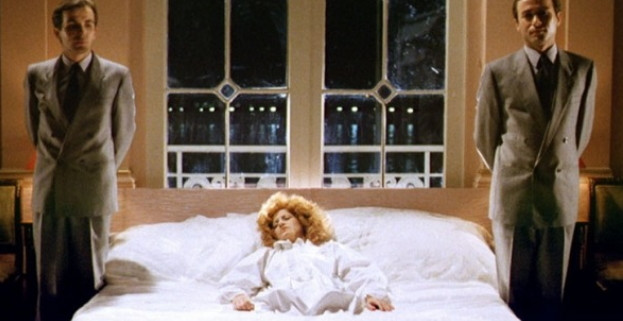
The planetary alignments of 2001 evoke this archaic sense of “significance” as they bridge the gap between outer being and individual consciousness. Note the similarity of these scenes to astrology, which originates in mythic conceptions of the world. The semantics of the term syzygy in different spheres of enquiry is significant here. While in astronomy the term denotes a planetary alignment, Jung, taking his cue from astronomers, adopted the concept for his archetypal theory to designate a coupling of anima and animus, giving rise to a union of the conscious and unconscious psyche. In light of the sense of “synchronicity” they produce, the syzygys in 2001 manifest both a strictly spatial constellation and an inner metaphysical sense (related to the impending ushering in of a new eon). Kubrick’s scrupulous composition of these scenes encompasses the meticulous integration of the monolith itself into the aesthetics of the syzygy (for example, the use of the contrast of darkness and light), all of which serves to connote the sun with the quality of a luxurious overflowing, creating a quasi-subjective sense that takes us a step beyond physics. In the background, one intuits both the medieval metaphysics of light and the mythological association of the sun with divine force, exemplified by the Greek god of light, Apollo.
The rectangle of the monolith and the circle in 2001 are numinous symbols that point toward a recovery of meaning through which Kubrick seeks to “heal,” aesthetically, the wound of mortality. Just like Jung, he thus counterposes to the rationalism that has developed in the wake of the scientific revolution of the 17th century, which ends up reducing man to “a momentary microbe on a dust mote,” a cosmos permeated with significance.
In A Zed and Two Noughts, aka ZOO, Peter Greenaway’s daring art house venture, the circle as symbol already appears in the title, where our attention is drawn to the blue letters, or numbers, of “ZOO,” which a few scenes on turns out to be a giant neon sign. ZOO matches 2001’s fascination with evolution, circles and myth. Yet where 2001 distilled a genuine metaphysics, Greenaway’s references to myth in ZOO form part of a deliberate postmodern aesthetics. 4 Allusions to myth, in other words, work on the level of historic/cultural citation; they are woven into filmic art as aesthetic elements loosely tied to their original mystical meaning.
In terms of genuinely common ground, both films are driven by their directors’ awareness of mortality. There is a strong element of theatrical farce in ZOO, which has a corollary in Greenaway’s focus on accident – accident in the sense of chance, but also quite literally in terms of the lethal traffic accident the film opens with, a traumatic irruption tearing a gash in the fabric of contingent cultural meaning. That irruption of the irrational sets the tone for the rest of the film. If, in 2001, we witness a mythologized teleology of evolution, ZOO could be conceived, in a first approach, as revolving around the original “accident” of the emergence of life through evolution, the primordial accident conditioning all further (fatal) contingencies. As Greenaway reveals in a 1998 interview with Marcelo Dantas, what might be construed as a sense of reality as fragile, as lacking any firm basis, has roots in two traumatic childhood experiences. He asserts:
I tried to find two occurrences I suppose which might provide the background for being interested. One, I was present at the drowning of a close friend when I was aged about 10, which is very traumatic. And when I was about 6 years old, I was taken to one of these air shows, where test pilots try out new aircraft and there was a tremendous crash, a lot of people were killed. So at the age of 6, I was witness to a terrible air crash, and at the age of 10 I had this traumatic event where a close friend of mine died through drowning and I couldn’t do anything to stop it. (Dantas)
The films constituting Greenaway’s peak in the 1980’s, including ZOO, but also Drowning by Numbers (1988), and The Belly of an Architect (1987), all obsessively encircle the void of death, striving to simultaneously present and contain its traumatic dimension. In this endeavor, Greenaway, believing truth can only be approached via artifice, in the wake a creative process that allows the medium itself to become the message (Dantas), has consistently employed an anti-realist aesthetics.
ZOO is Greenaway’s second full feature film after The Draughtman’s Contract (1982) and harkens back to a time when the director perfected his cinema of the “postmodern baroque.” The ostentatious artifice of the film’s narrative, which Greenaway originally intended to deploy in order to explore notions of twinhood, allows narrative form to be matched naturally with the prolific symmetry, mirroring, and “placements in the abyss,” via the device of the film within the film, on the film’s aesthetic level. The interpenetration of aesthetic and narrative form is as intentional here as it is in 2001. In both cases, the meticulous coordination of different layers renders the films complex and at times impenetrable, endowing them with an aura of artistic integrity. Consider as an example the frequent placement of ZOO’s twins Oswald and Oliver in symmetrical settings that echo the twin-like appearance of Dave Bowman and Frank Poole, who harmoniously melt into the geometry of their spaceship on the Jupiter mission. Where Kubrick explicitly likens 2001 to a symphony (Norden), Greenaway, an artist by training, has consistently placed the aesthetics of his cinema in the vicinity of painting (Dantas) and ZOO, beautifully lit by Sacha Vierny, the cinematographer of Last Year at Marienbad (L’année dernière à Marienbad, Resnais, 1961), features various instances of a tableau vivant based on a Vermeer painting. Yet while Kubrick and Greenaway may employ a comparable aesthetics, their perspectives on “meaning” are diametrically opposed.
The two major influences on Greenaway’s oeuvre he never tires of citing, Ingmar Bergman’s The Seventh Seal (1957) and Alain Resnais’ Last Year at Marienbad, reveal the essence of his approach. While his stress on The Seventh Seal encapsulates an existential seriousness aiming at the “truth” of the human condition, the extreme artifice of his cinema can be traced back, at least in part, to Last Year at Marienbad. This confluence is emblematically reflected in ZOO.
At the beginning of the film, the wives of zoologists Oswald and Oliver Deuce, the two noughts, separated conjoined twins, are killed as a swan escaping from the zoo crashes into their car. The driver of the car, Alba Bewick, survives the accident, but is seriously injured and has her leg amputated. In the wake of this shock mirroring Greenaway’s own history with trauma, the brothers develop a pathological obsession around death, decay, and Darwinian evolution. Dazed by grief, they watch David Attenborough’s TV series Life on Earth (1979) to ponder, along with Attenborough, evolution and the invention of life “seemingly out of nothing.” This invention, Greenaway seems to suggest, must be understood against the uncanny backdrop of death, which sheds light on the brothers’ motivation, that is, forging a link to the death of their wives as (unwitting) participants in nature’s scheme. Evolution is presented by Attenborough with a calm, and sonorous voice underscoring the authority of modernity’s scientific narrative as such, which seemingly allows the twins to establish the subterranean ontological underpinnings to the crash, or, to put it differently, to re-inscribe its traumatic impact in a meaningful scientific narrative.
Taking their post-traumatic exploration of death to extremes, they produce a series of time-lapse videos chronicling biological decay, following, in line with Greenaway’s penchant for systems of classification, the chronology in which the animals they use for their experiments first appeared in evolutionary history. Thus they begin with a bowl of prawns and proceed to fish, a small crocodile, a swan, a dog, and, finally, a zebra. Through the time-lapse distortion, decay curiously comes to life, making these films appear to approach, phantasmatically, the Lacanian dimension of the Real.
Greenaway’s background as a painter informs all of his films, which are, at a certain level, self-aware displays of a preoccupation with art history, with a particular emphasis on the Baroque era, as exemplified by ZOO’s focus on the Dutch Golden Age. Seen in this context, the time-lapse videos, deployed with the meta-cinematic sensibility informing the device of the film within the film, work in analogy with the baroque vanitas theme. For as the brothers watch the reduction of creatures produced by evolution to nothingness, they cannot fail to recognize themselves. The animated time-lapse decay becomes a perversely living force, a burgeoning entity on par with the psychological force of trauma. It is almost as if death acquires a face looking back at the twins, and by extension the viewer, like the anamorphotically distorted skull in Hans Holbein the Youger’s famous Renaissance painting The Ambassadors (1533), which Jacques Lacan identified in his Seminar XI as embodying the object gaze, in which the viewer himself is inscribed (67-105). In a similar vein, the clockwork of the film’s central “Time Lapse” theme (composed for the film by Michael Nyman) is ticking throughout.
The artist’s angle of Greenaway’s narrative is exemplified by the figure of Alba Bewick, the driver of the crashed vehicle, who is left bereft of one of her legs in the wake of the accident. Alba becomes a focal point for Greenaway’s obsession with symmetry. She has an affair with both Oswald and Oliver and becomes pregnant with twins by one of them. Van Meegeren, a sinister veterinary surgeon, sharing traits with Greenaway himself (though the true alter ego of Greenaway in this film is the charismatic and theatrical keeper of the owls van Hoyten), persuades her to let him amputate her second healthy leg, for the protuberance of the single leg disturbs his sense of aesthetics. In the aftermath of the operation, she becomes despondent scheming to have the twins film the decomposition of her body after her death by suicide. However, this plan doesn’t work out and Oswald and Oliver decide to kill themselves, in order to have their decomposition filmed by the time-lapse equipment put in place prior to their suicide. A horde of snails short-circuiting their equipment thwarts this ambition.
As in 2001, ZOO closes a circle at the end. The twins’ suicides, committed in the attempt to complete the time lapse project they took on in the wake of the crash, symmetrically mirrors the death of their wives at the beginning. Yet where the narrative circles of 2001 are designed to evoke a sense of cosmic awe, the circle that closes ZOO embodies, precisely, the built-in obstacle, the inherent stumbling block to an attempt to tie any of our socio-cultural syntheses of meaning to the underlying Real of nature. The envisioned apotheosis of the time-lapse series, a morbid chronicle of the twins’ decay, fails as a result of the short-circuiting of the equipment by snails, creatures representing the very amorphous slime on the other end of the evolutionary spectrum. The brothers attempt to re-create, on the level of culture, the trajectory of evolution, whereby their filmic re-production, with its focus on death and decay, inverts evolution’s inventions of new life, yet the two series are doomed to forever run parallel to each other. As the unforeseen “flowering” of slime demonstrates, nature resists domination; it cannot be captured in the net of a symbolic narrative that would neutralize its senseless, traumatic dimension. In Lacanian terms, there is no Other of the Other. The Symbolic, a circular, self-enclosed network resting on pure structural difference, lacks any anchor in an extra-linguistic Real – here the Real of the trajectory of evolution the twins seek to “bind” in an attempt to reconstitute a meaningful reality after a shattering trauma.
The death of the brothers at the end cannot confer sense on the death of their wives at the beginning, so that, as the film closes its final circle, we apprehend its central nihilist motif – the appropriation of the circle, traditionally an icon of the sacred and of perfection, to signify the zero, to embody a lack of meaning. The circle in ZOO is an overdetermined symbol. It is encoded in this film to represent enclosure, for example, the enclosure of the zoo, in order to ironically index notions of the sacred. It emerges, ultimately, as a signifier of the “nought” of the title. Throughout the film, Alba Bewick seems frustrated with the brothers’ attempts to furnish the accident with a retroactive meaning, be it a supernatural meaning revolving around the signifier “swan,” or one based in evolution. At one point, she furiously exclaims: “Look, it was an accident. Five thousand accidents happen every day – bizarre, tragic, farcical. They are acts of God.” Greenaway himself palpably identifies with Alba here as he advances a postmodern reading that is not only antithetical to any recovery of the archaic semantics of myth, but even implies that science itself can, ultimately, be regarded as but another narrative that will fail to establish a solid ground for our existence.
Alba’s use of the term “acts of God” is telling as it is emblematic of Greenaway’s approach to referencing mythology in ZOO. “Act of God” is, of course, a technical term used in insurance policies to denote an uncontrollable natural force, yet in the context of a film provocatively juxtaposing mythic notions of creation with contemporary narratives based on evolutionary science, the underlying “theological” allusion is significant. The deliberately ambivalent use of the term encapsulates Greenaway’s playful oscillation between a reference to the metaphysics of myth and our own present frame of reference -–a strange combination of scientific rationality with the rule of chance. ZOO’s opening car crash already carries multiple mythological references. While the car itself is a Ford Mercury, the immediate cause of the accident, the wayward swan, hints at the myth of Leda and the Swan, introducing the film’s theme of the intimate conjunction of violence and death and distant biological origins. In the Leda myth, the swan, the divine Zeus in disguise, procreates with Leda, a mortal, who carries four children from this union.
In the immediate aftermath of the crash, Greenaway introduces a more direct reference to creation, Adam and Eve, and the apple, from the biblical Genesis. The twins, framed by symmetrical, neo-classical architecture that is decorously lit and comes complete with a set of receding columns invoking Burke’s concept of the sublime 5 , discuss a horrific circumstance: their wives’ imminent decay. They talk here with an air of bold detachment that echoes the provocative rhetorical flourish characterizing Greenaway’s own approach to speech. Asked what happens first, Oliver responds that a particular strain of bacteria, Biscosis populi, sets to work in the intestine: “There are supposed to be 130,000 biscosis in each lick of the human tongue. 250,000 in a French kiss. The first exchange at the very beginning of creation, when Adam kissed Eve.” When Oswald interjects that Eve might have kissed Adam, Oliver responds: “Unlikely, she used her first 100,000 on the apple.”
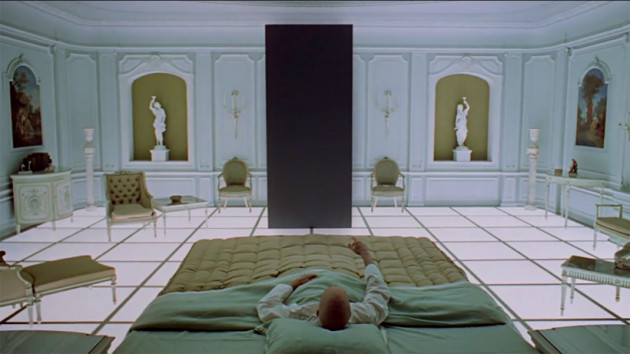
While these mythic references are designed to reverberate with us, Greenaway deconstructs their metaphysical context, as they are deployed to signify explicitly past attempts to explain origins. The exchange collates mythic reference with the rationality of scientific discourses, juxtaposing it (myth) to the blind insistence of bio-chemical process. This re-orientation of the original organic holism of mythology towards the microscopic, biological level of its constituent elements reminds us of the opening gambit of the scientific revolution of the 17th century – the excavation of purpose and meaning from (physical) reality. While the exchange deconstructs myth purely verbally, this gesture is later powerfully re-inscribed on the level of the film’s visual theme of decay, for both an apple and a swan are subject to the twins’ time lapse experiments. Indeed, the sight of the rapidly decaying apple forms some of this film’s most iconic imagery as the gaping void devouring it from within reads like a sarcastic comment on the apple as a mythic symbol. The creation it points to is brutally revealed to be a place subject to entropy, rather than metaphysical meaning. The circular void devouring the apple perfectly encapsulates Greenaway’s appropriation of the circle to embody a lack of meaning.
Of course, the exchange, so rife with sexual innuendo, also alludes to the biblical apple as a symbol of (female) sexuality. In light of the corrosive function of Biscosis populi, a clear line emerges here from original sin (“she used her first 100,000 on the apple”) to the “infected” apple decaying in time lapse, so that sexuality is seen to be implicated in the sickness of being. However, there is also an implied line from the beginning of creation to the decay of the twins’ wives, where Biscosis populi “sets to work in the intestine.” In a final twist, however, it turns out that Biscosis populi doesn’t actually exist (a corresponding search on the internet will only yield references to Peter Greenaway’s movie). The existence of this bacterium is in itself mythical and Greenaway is seen here to insidiously, surreptitiously deconstruct scientific discourse alongside mythological narratives.
The circles in the vicinity of a bed-ridden Alba Bewick on ostentatious, baroque display, a frequent sight, further underscores the director’s predeliction for deploying religious and mythological references. There is a multiplicity of circles in her bed’s metal framing and, in key scenes, a circle appears to form a “halo” behind her head (Espejo). These and other examples are references to the sacred that are clearly ironically bracketed, mitigated by Greenaway’s poststructuralist awareness of the utter cultural contingency of metaphysics. A similar sarcasm is on display in a related, earlier scene, where Oswald watches Attenborough’s Life on Earth in the zoo’s cinema. We note the appearance of a “halo” behind the head of Fallast, as he stands in front of the projector, while on the screen opposite there is a bustling of microscopic life-forms that Attenborough’s animated narrative relates back to the primordial protozoan slime “two thousand million years ago.” As Fallast steps aside to sit down, we are left staring at the naked light of the projector in their cinema, becoming aware of the light from the projector behind our back, which projects this scene onto our screen. This cannot but induce a sense that both old and new narratives, notions of the sacred and of evolution alike, are part of essentially the same “game” of culture.
It pays to compare ZOO’s sick bed scenes with the concluding portion of 2001’s human zoo sequence. Both sequences are emblematic of the respective films’ status as geometrically based works of art. Alba’s bed always constitutes the center of gravity around which the room is arranged in near symmetrical fashion, which cannot but evoke the similar arrangement around Bowman’s bed. As Greenaway plays with the idea of the halo in these scenes, the circle does reference the well-known primordial associations of the symbol, but we sense the ever-present shift to the zero, to a sense of absurdity of both the natural and cultural orders —arguably the ultimate significance of the two noughts.
While evolution may have produced a trajectory of ever more complex organisms, its underlying cycles of generation and corruption imply the inevitable, futile return to nothingness “nullifying” the process as such. When Alba and the twins watch the time-lapse movie featuring the decay of prawns, Oswald responds to Alba’s query of what this is all about: “Prawns on their way back.” ”To where?” wonders Alba, to which Oliver responds: ”To where they came from – ooze, slime, murk.”
In contrast to this nihilism regarding evolution, to which both Greenaway and his twins subscribe, the circles, and the rectangle of the monolith, in 2001 embody Kubrick’s artful reanimation of an archaic metaphysics deployed with a view to connoting evolution with spiritual progress. Towards the end of the film, the rectangle of the monolith appears in Bowman’s “hospital” room submerged in white light, as we are being prepared for the imminent evolutionary leap, the emergence of the “star child.” By the final scene, the film has completed its cycle through the stages of Campbell’s monomyth, and as a result of the “circulation” of spiritual energy this implies, has struck the spark of a re-vitalizing new meaning. While the circles (and the monolith) of 2001 are thus designed to convey, in a dream-like manner, the spiritual potency of archetypes, be they Platonic or Jungian. Those of ZOO help to deconstruct the narrative concoctions of metaphysics, myth, and even science.
Greenaway has often been accused of indulging in an empty formalism. If, as he holds, you can only attain truth through artificiality, that the medium becomes the message in his films (Dantas), how, precisely, does form relate to the message of his cinema? At first glance, Greenaway’s formalism appears to fulfil the purely practical function of imposing an order on films that, as a result of the greatly reduced role of narrative and Greenaway’s complete disinterest in character development would lack any semblance of cohesion without additional structuring devices. Witness the number series 1 to 100 in Drowning by Numbers, or the alphabet, visual symmetry, the time lapse series, and the precise clockwork of Michael Nyman’s powerful “Time Lapse” theme in ZOO. These are films that could not be sustained by their narrative alone. Greenaway helpfully uses the immediately accessible analogy with “Mondrian’s grid” (Dantas) to capture the purpose of non-narrative devices in his films.
Yet Greenaway’s formalism is simultaneously aesthetic and philosophical; it is demonstrably deployed with a view to conveying “truth.” Greenaway himself explicitly equates the systems of classification deployed in his films with wider social and cultural discourses through which being is “disclosed” to us, arguing that: “Classifying things – I mean that’s almost a definition of civilization – are our desperate attempt to understand the chaos around us all the time by finding systems of classification, whether that’s some grand theory of relativity, or whether it’s simply the telephone book” (Dantas).
Cultures use a variety of different “keys” of classification, imposing their own, unique order, to transform the amorphous chaos of pre-symbolic being into a comprehensible reality. The structuring devices of Greenaway’s films, forming part of an often theatrical and ostentatious aesthetics, effectively reenact culture’s imposition of the Symbolic. This striking confluence, of Greenaway’s “ordered” aesthetics with the socio-symbolic “order” placing the cultural subject in his or her reality, is particularly evident in ZOO, where Greenaway uses the alphabet as a structuring device. The alphabet, of course, comprises the core atomic units of language, the paradigm of all other social institutions. Witness how Alba Bewick’s daughter, Beta, is inducted into the social order, as she is taught the alphabet by various figures who pronounce its letters alongside corresponding animal names, for example, “B is for butterflies.”
Referring to one of his early short films, Greenaway explains the link between his structuring devices and the wider domain of culture:
I made a film called H is for House (1973), which just simply put together all the concepts and all the ideas, which are all very disparate, which are simply linked by the initial letter. So you get ideas of H is for happiness, health, hemorrhage, etc., His Holiness, heaven, hell, hysterectomy, hamster. The only reason these things are put together is for the stupidity of a system. And if you look at all our systems and devices, all these desperate systems we use to classify our universe, a lot of them are extremely absurd. But they are necessary, they are necessary in order to tabulate, to give our sense of history a method, to give our memory something to hang on to. (Dantas)
To Greenaway, the medium becomes the message, because the medium allows for a theatrical recreation of culture that conveys, through its very ostentatious absurdity, that there is nothing outside the act, the performance itself. To appreciate Greenaway’s cinema therefore requires a degree of complicity with the director’s game. ZOO’s full and abbreviated title combined indicate what is at stake in this game. In the first instance, the Zed and “ZOO” represent a concern with the alphabet as a core building block of language and culture, but as soon as we switch perspectives and train our gaze on Greenaway’s number game, we notice the noughts, representing the lack of any founding extra-linguistic “meaning” underpinning culture, emerge.
Greenaway’s assertion that the systems and devices that allow us to classify the universe are simultaneously necessary and absurd is profoundly Lacanian. Lacan theorized that the socio-symbolic order of language and culture is void, based on pure structural difference, and that the “locus” of the Other supposed to guarantee its homogeneity, does not in fact exist. Yet this is consistent with a point of view according to which the Other is nonetheless effective. The Other will become the effective “guarantor” of the symbolic universe, insofar as it is collectively “posited” by subjects in such a way that culture becomes authoritative and binding (Ẑiẑek 1989, 102-103).
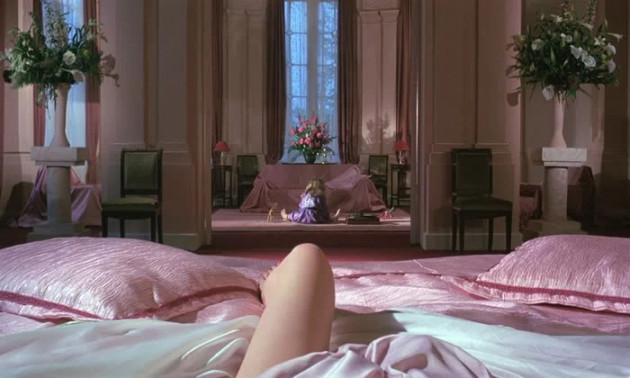
This rather abstract notion, the locus of the Other posited by a community with a view to stabilizing social institutions, is more readily understood in terms of some of its concrete manifestations. It is enough to consider God as the Other of religious discourse, or the perceived necessity of the dialectical progress of history as the Other of Marxism (Ẑiẑek 1989, 108-109).
The powerful impact of Greenaway’s cinema can be seen to derive from our engagement with the director’s absurdist re-creation of culture’s collective auto-hypnosis, which will lead us to viscerally apprehend the absence of intrinsic meaning. The emphasis on nudity in ZOO should be seen in light of this compelling “de-construction” of culture and meaning, as a further attempt to approximate the “naked truth.” In the background we intuit, beyond the director’s poststructuralist sensibility, his childhood traumas that will have destabilized the coordinates of his reality. It is as if he is taking his revenge, juggling with the component parts of culture on a grand stage, communicating to the audience the utter fragility of any sense of reality.
At the same time, Greenaway himself speaks “from” the site of the Other as he communicates his Truth with authority and verve, for truth always emerges as a function of the dialectical relation of the symbolic order and the Other. At core, the compelling experience of Greenaway’s films rests on the ambivalence of a perceived absurdity of being and the simultaneous authoritative flourish with which Greenaway announces it. The paradox inherent to postmodernism has always been this: the truth that everything is relative must somehow “except” itself from this relativity.
Bibliography:
Beiser, F. 2005. “Hegel”. London and New York: Routledge.
Campbell, J. 1949. “The Hero with a Thousand Faces”. New York: Pantheon Books. Commemorative edition. Princeton: Princeton University Press. 2004.
Dantas, M. (Direction). 1998. “100 Objetos – Peter Greenaway, Centro Cultural Banco do Brasil e SESC, São Paulo”. https://vimeo.com/92646732.
Espejo, D. 2001, “Symmetry and Structure in Greenaway’s A Zed and Two Noughts” in Senses of Cinema. Issue 18. http://sensesofcinema.com/2001/film-and-the-other-arts/zoo/
Gelmis, J. 1969. “An Interview with Stanley Kubrick”. http://www.visual-memory.co.uk/amk/doc/0069.html?LMCL=s9ALb5. Excerpted from Gelmis, J. 1970. “The Film Director as Superstar”. Garden City, New York: Doubleday and Company.
Gullatz, S. and Gildersleeve, M. 2018. “Freedom and the Psychoanalytic Ontology of Quantum Physics”. Journal of Analytical Psychology. Feb. 63(1):85-105.
Harari, Y.N. 2014. “Sapiens: A Brief History of Humankind”. Harvill Secker: London.
Jung, C.G. 1961. “Memories, Dreams, Reflections”. London: Fontana Press.
_______1960. “Synchronicity: An Acausal Connecting Principle”. Princeton: Princeton University Press.
Lacan, J. 1977. “The Four Fundamental Concepts of Psychoanalysis”. London: The Hogarth Press.
Nagel, T. 2013. “The Core of Mind and Cosmos”. https://opinionator.blogs.nytimes.com/2013/08/18/the-core-of-mind-and-cosmos/
Norden, E. 1968, Stanley Kubrick: Playboy Interview. https://scrapsfromtheloft.com/2016/10/02/playboy-interview-stanley-kubrick/
Petrolle J.E., “Religion without Belief: Contemporary Allegory and the Search for Postmodern Faith”. Albany: State University of New York Press.
Rice, J. 2008. “Kubrick’s Hope: Discovering Optimism from 2001 to Eyes wide Shut”. Lanham: Scarecrow Press.
Willoquet-Maricondi, P & Alemany-Galway M ed. 2008. “Peter Greenaway’s Postmodern/Poststructuralist Cinema”. Lanham and Plymouth: Scarecrow Press.
Ẑiẑek, S. 1996. “The Indivisible Remainder: On Schelling and Related Matters”. London: Verso.
______1989. “The Sublime Object of Ideology”. London: Verso.
Notes
- Another key factor driving the scientific revolution was, of course, the zest for discovery. In Chapter 15, “The Marriage of Science and Empire” of his bestseller Sapiens: A Brief History of Humankind (2014), Yuval Noah Harari compellingly elaborates on the zeal for discovery as a unifying principle underlying the co-extensive building of the edifice of science and of the empires of the early modern European nation states. ↩
- The notion that man can be likened to a microbe on a rock in the universe is the perfect correlate to the mechanism of science. One might object that the universe as a totality arises only insofar, as it appears to the consciousness of man, that outside of consciousness it would only be a vast collection of quantum events. ↩
- These three basic stages are further subdivided, into altogether 17 further stages that need not concern us here. ↩
- For a comprehensive overview of the postmodern sensibilities of Greenaway’s cinema see Willoquet-Maricondi and Alemany-Galway ed. 2008. ↩
- Petrolle (2007, 100) aligns the colonnade in this scene with Burke’s notion of a sublime sense invoked by an artificial infinitude. ↩


